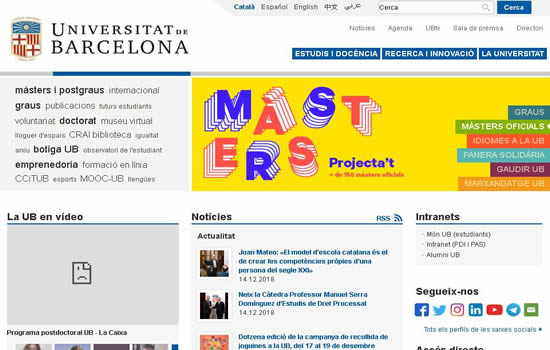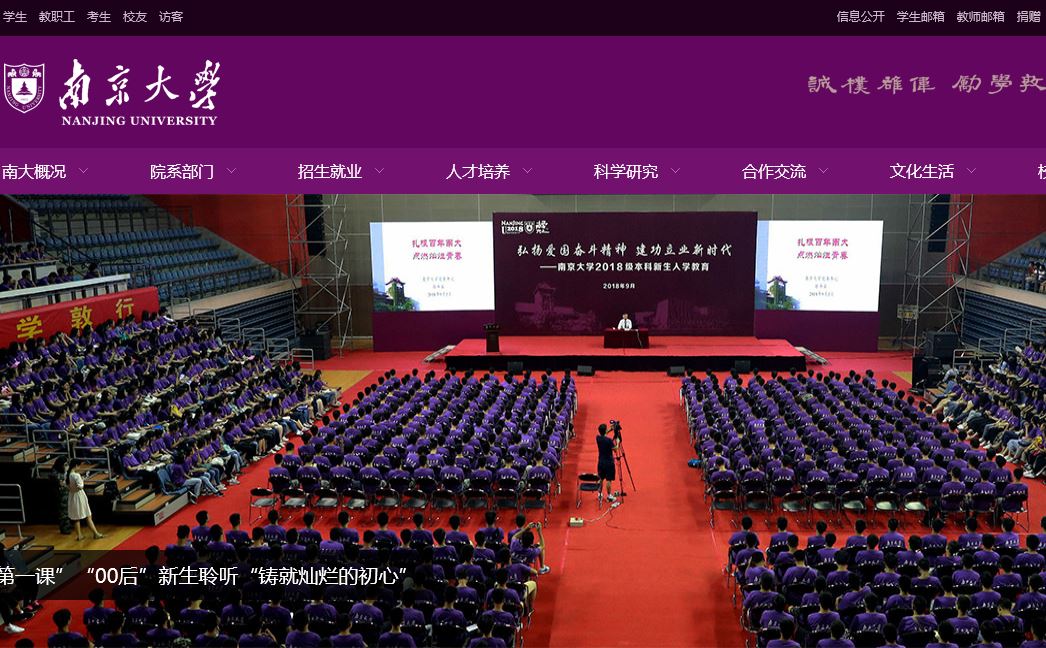选择热点
 荷兰莱顿大学
荷兰莱顿大学 西班牙巴塞罗那大学
西班牙巴塞罗那大学 巴西圣保罗大学 University of Sao Paulo, Brazil
巴西圣保罗大学 University of Sao Paulo, Brazil 台湾南华大学 University of South China in Taiwan
台湾南华大学 University of South China in Taiwan 科技大学 National University of Defense Technology
科技大学 National University of Defense Technology 南京大学 Nanjing University
南京大学 Nanjing University 上海复旦大学 Fudan University
上海复旦大学 Fudan University 泗水大学(Ubaya)
泗水大学(Ubaya) 印尼大学 universitas indonesia
印尼大学 universitas indonesia 越南某大学 Vietnam National University
越南某大学 Vietnam National University 菲律宾大学 University Of The Philippines
菲律宾大学 University Of The Philippines
日本科学家造出长肌肉机器人
发布时间:2025-01-06
来源:大学网站
Researchers have developed a way to integrateliving muscle into machines to create a biohybridrobot.
研究人员找到了一种把活体肌肉整合到机械上,从而制造出生物混合机器人的办法。
The study was undertaken at the University of Tokyo Institute of Industrial Science and demonstrates how the researchers developed the use of living tissue within robots, rather than just metal and plastic.
这项研究是在东京大学工业科学研究所进行的,它展示了科研人员如何在机器人身上培育和利用活体组织,而不仅仅是金属和塑料。
The new method progresses from individual muscle precursor cells to muscle-cell-filled sheets, and then to fully functioning skeletal muscle tissues.
新方法从打造单个肌肉前体细胞开始,到充满肌肉细胞的薄片,然后再到具有完全功能的骨骼肌组织。
They were able to incorporate these muscles into a robot as antagonistic pairs mimicking those in the body to achieve remarkable robot movement and continued muscle function for over a week.
他们能将这些肌肉整合到一个机器人上,作为拮抗肌对模仿身体内的肌肉,实现显著的机器人运动并维持了一周多的肌肉功能。
To develop the robots, the team first constructed a robot skeleton on which to install the pair of functioning muscles.
为了研发这个机器人,该团队首先构建了一个机器人骨架,用于安装这对运动肌肉。
This included a rotatable joint, anchors where the muscles could attach and electrodes to provide the stimulus to induce muscle contraction.
这包括一个可旋转的关节,肌肉可以附着的锚点,以及提供刺激诱发肌肉收缩的电极。
"If we can combine more of these muscles into a single device, we should be able to reproduce the complex muscular interplay that allows hands, arms, and other parts of the body to function," the lead author of the study, Yuya Morimoto, said.
研究第一作者森本雄矢表示:如果我们能将更多像这样的肌肉组合到一个装置里,就能够重现让双手、胳膊和身体其他部位发挥作用的复杂肌肉运动。
”【日本科学家造出长肌肉机器人查看网站:[db:时间]】
研究人员找到了一种把活体肌肉整合到机械上,从而制造出生物混合机器人的办法。
The study was undertaken at the University of Tokyo Institute of Industrial Science and demonstrates how the researchers developed the use of living tissue within robots, rather than just metal and plastic.
这项研究是在东京大学工业科学研究所进行的,它展示了科研人员如何在机器人身上培育和利用活体组织,而不仅仅是金属和塑料。
The new method progresses from individual muscle precursor cells to muscle-cell-filled sheets, and then to fully functioning skeletal muscle tissues.
新方法从打造单个肌肉前体细胞开始,到充满肌肉细胞的薄片,然后再到具有完全功能的骨骼肌组织。
They were able to incorporate these muscles into a robot as antagonistic pairs mimicking those in the body to achieve remarkable robot movement and continued muscle function for over a week.
他们能将这些肌肉整合到一个机器人上,作为拮抗肌对模仿身体内的肌肉,实现显著的机器人运动并维持了一周多的肌肉功能。
To develop the robots, the team first constructed a robot skeleton on which to install the pair of functioning muscles.
为了研发这个机器人,该团队首先构建了一个机器人骨架,用于安装这对运动肌肉。
This included a rotatable joint, anchors where the muscles could attach and electrodes to provide the stimulus to induce muscle contraction.
这包括一个可旋转的关节,肌肉可以附着的锚点,以及提供刺激诱发肌肉收缩的电极。
"If we can combine more of these muscles into a single device, we should be able to reproduce the complex muscular interplay that allows hands, arms, and other parts of the body to function," the lead author of the study, Yuya Morimoto, said.
研究第一作者森本雄矢表示:如果我们能将更多像这样的肌肉组合到一个装置里,就能够重现让双手、胳膊和身体其他部位发挥作用的复杂肌肉运动。
”【日本科学家造出长肌肉机器人查看网站:[db:时间]】
- 上一篇: 关于中美贸易冲突,你应该知道的五个问题
- 下一篇: 报告显示 我国年轻父母热衷带娃旅行
相关阅读
目录列表
资讯列表
英语资讯


共0条评论
网友评论温馨提示:您的评论需要经过审核才能显示,请文明发言!